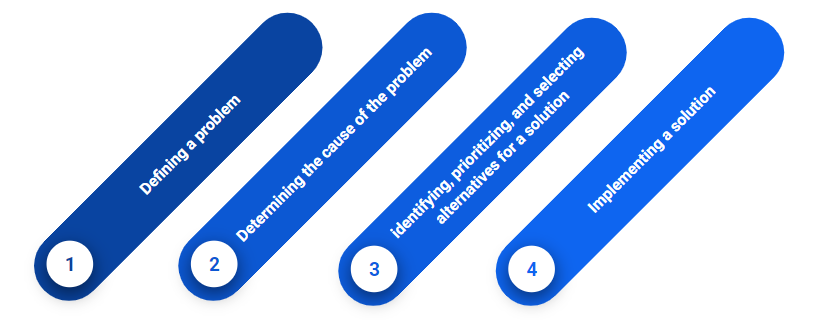In today’s ever-growing and changing world being able to think in an innovative way is essential at many levels. But sometimes it can be challenging to take a step back and reflect in a fast-moving environment.
Problem solving includes 4 different stages:

Creativity, in turn, isn’t the ability to come up with something out of nothing. It’s about generating new ideas by combining, changing or reapplying existing concepts to different contexts.
“We cannot solve our problems with the same thinking we used when we created them” – Albert Einstein

So how do we use our imagination effectively in the problem solving process?
– Different Thinking Styles –
Divergent thinking: generating as many solutions as possible to a specific challenge
Convergent thinking: considering various ideas, proceeding to refine them and select which one to take forward
Analytical thinking: breaking down a challenge to its constituent parts in order to find a problematic element
Critical thinking: considering a wide range of relevant factors in evaluating an issue and exploring the evidence that supports or opposes an idea
Analogical thinking: finding a connection between two scenarios and analyze if a valuable solution can be inferred as a result
Inductive thinking: involves the use of knowledge and theories to form a conclusion
Deductive thinking: verification of a new solution by testing it against different scenarios
Combining one (or multiple) of these thinking styles with creativity tools like mood boards, story boards, mind mapping or brainstorming sessions will allow us to reach an effective solution even to the most mundane obstacles.
Here’s a few last tips to remember, regarding this process:
- No problem is too big or too small;
- Creativity tools don’t produce new ideas, they assist the generative process by improving their fluency, flexibility and originality;
- Interdisciplinarity is good, as it’ll bring more diverse perspectives;
- A low-stress and safe environment will contribute to a highly active subconscious;
- Taking an evidence-based approach is important, remember not to focus on the why and how but on quantifiable information instead!
